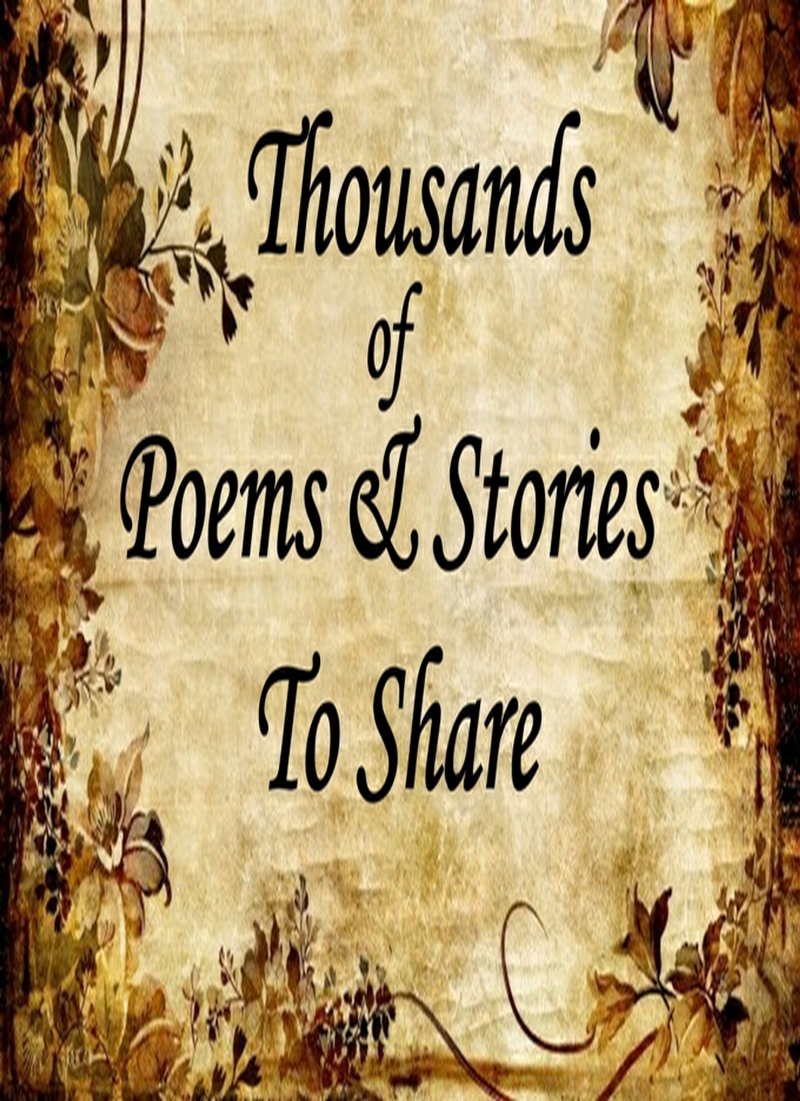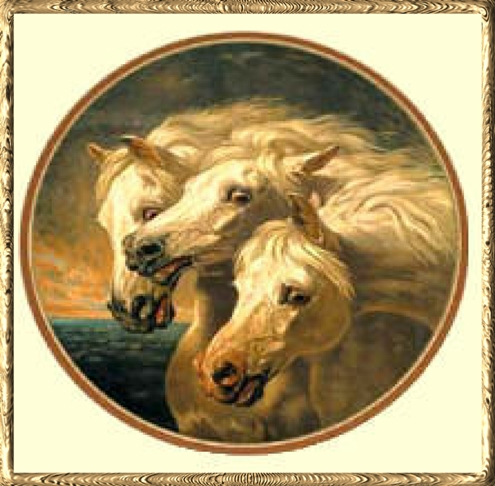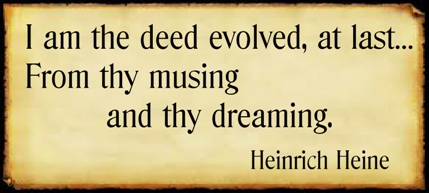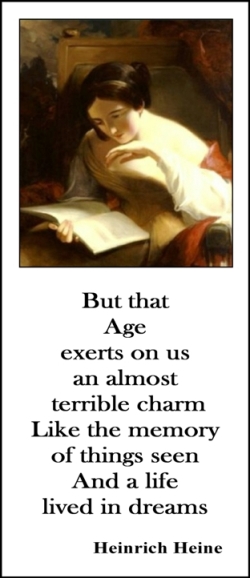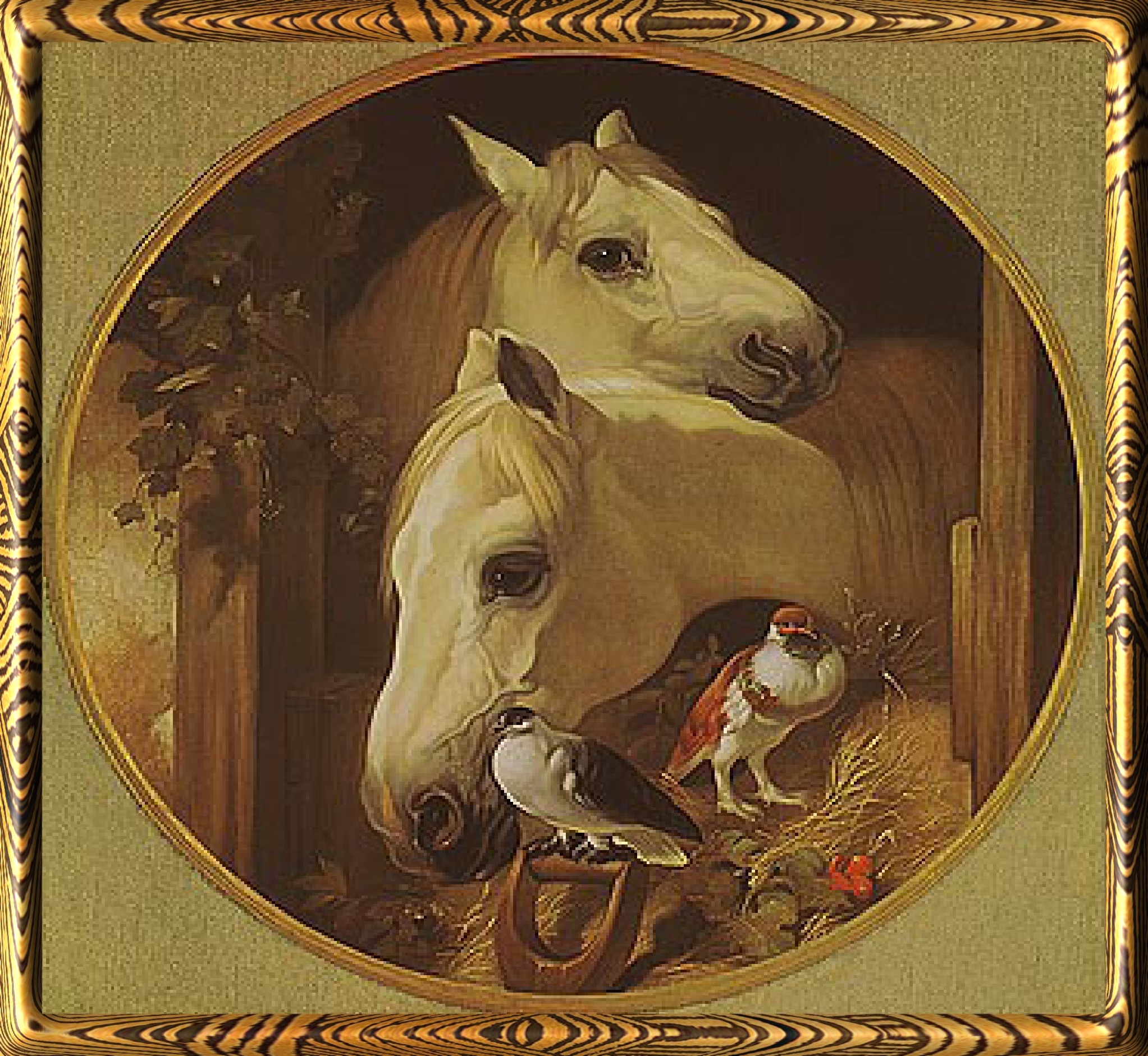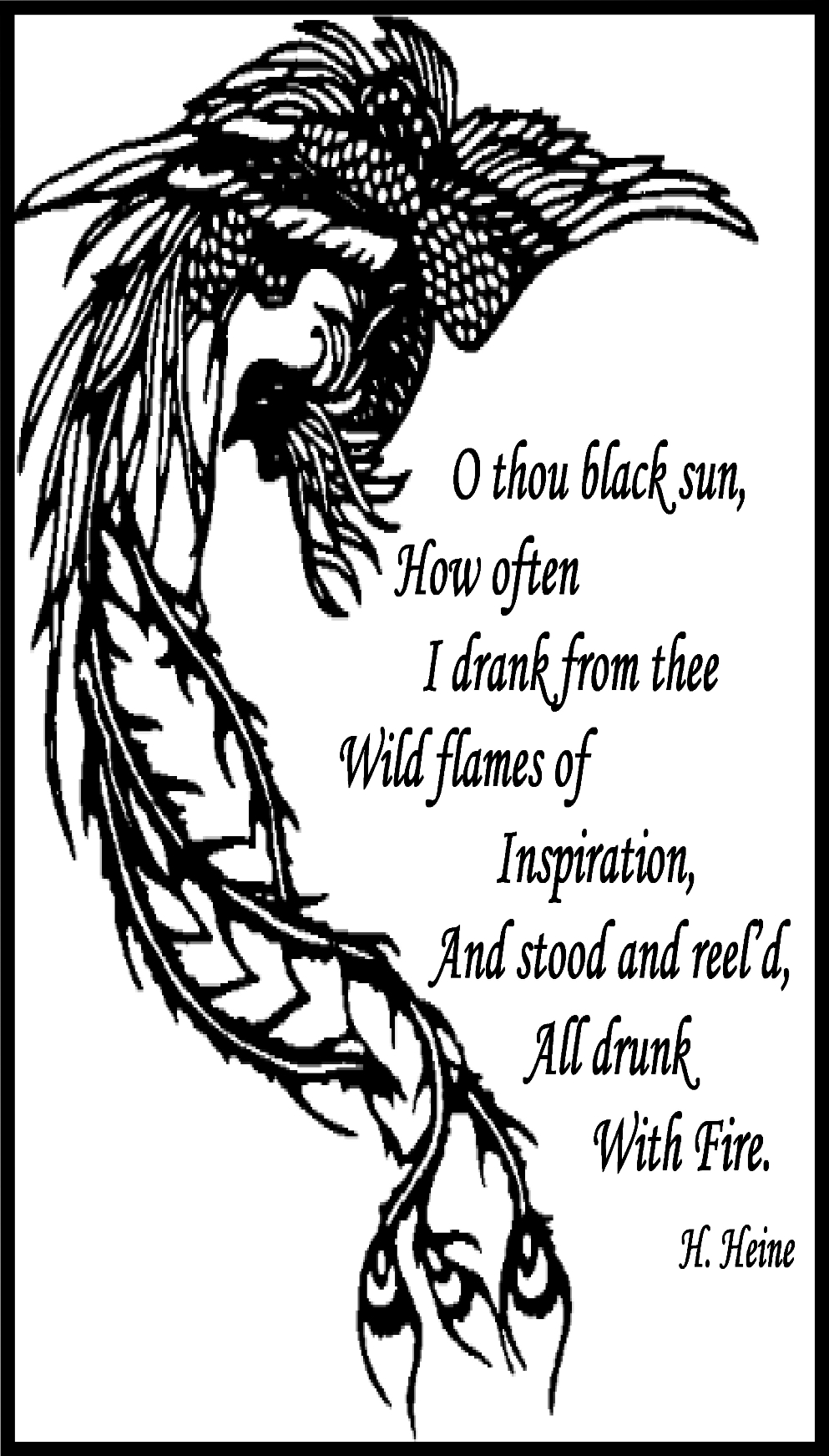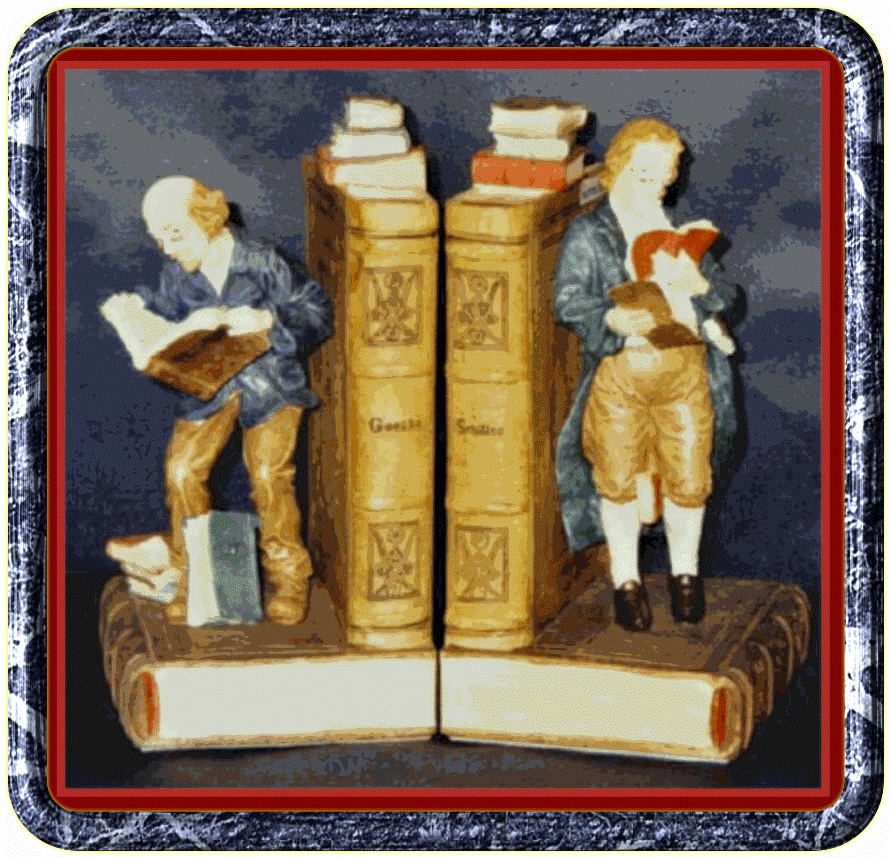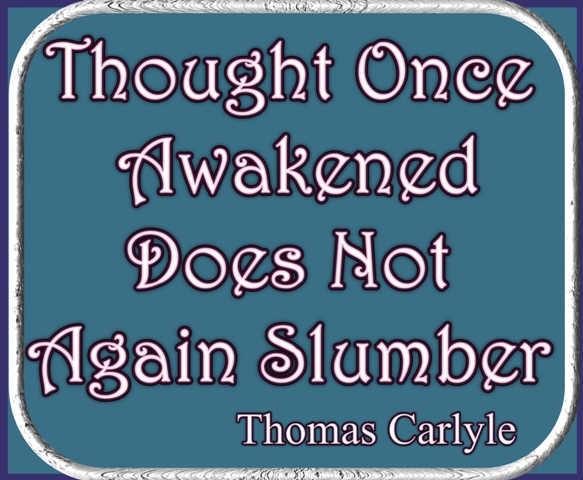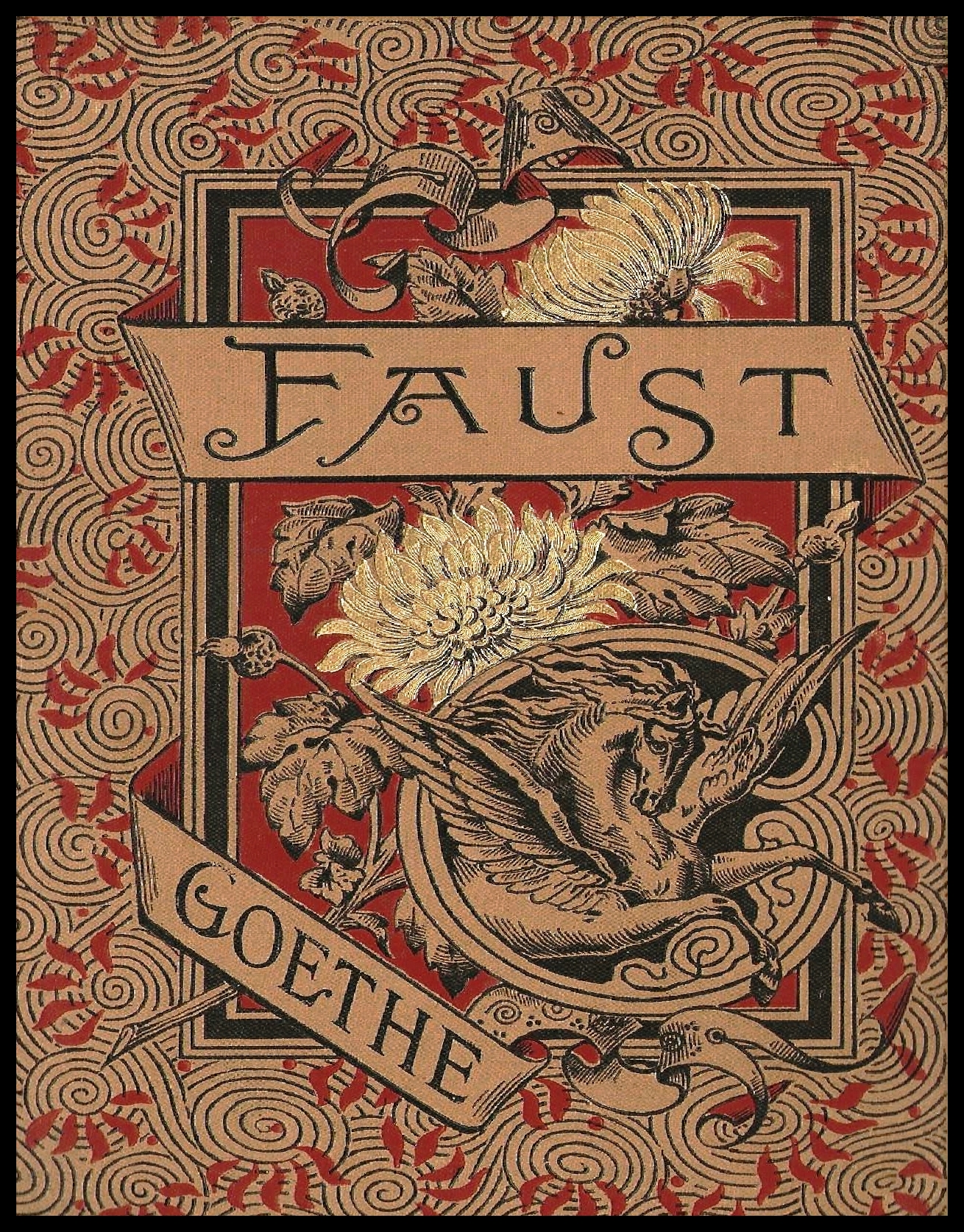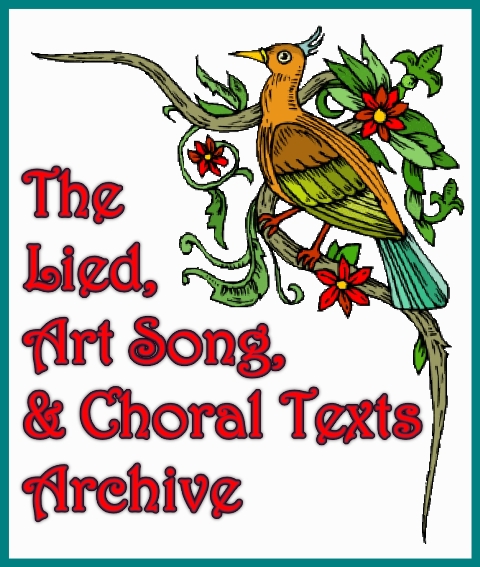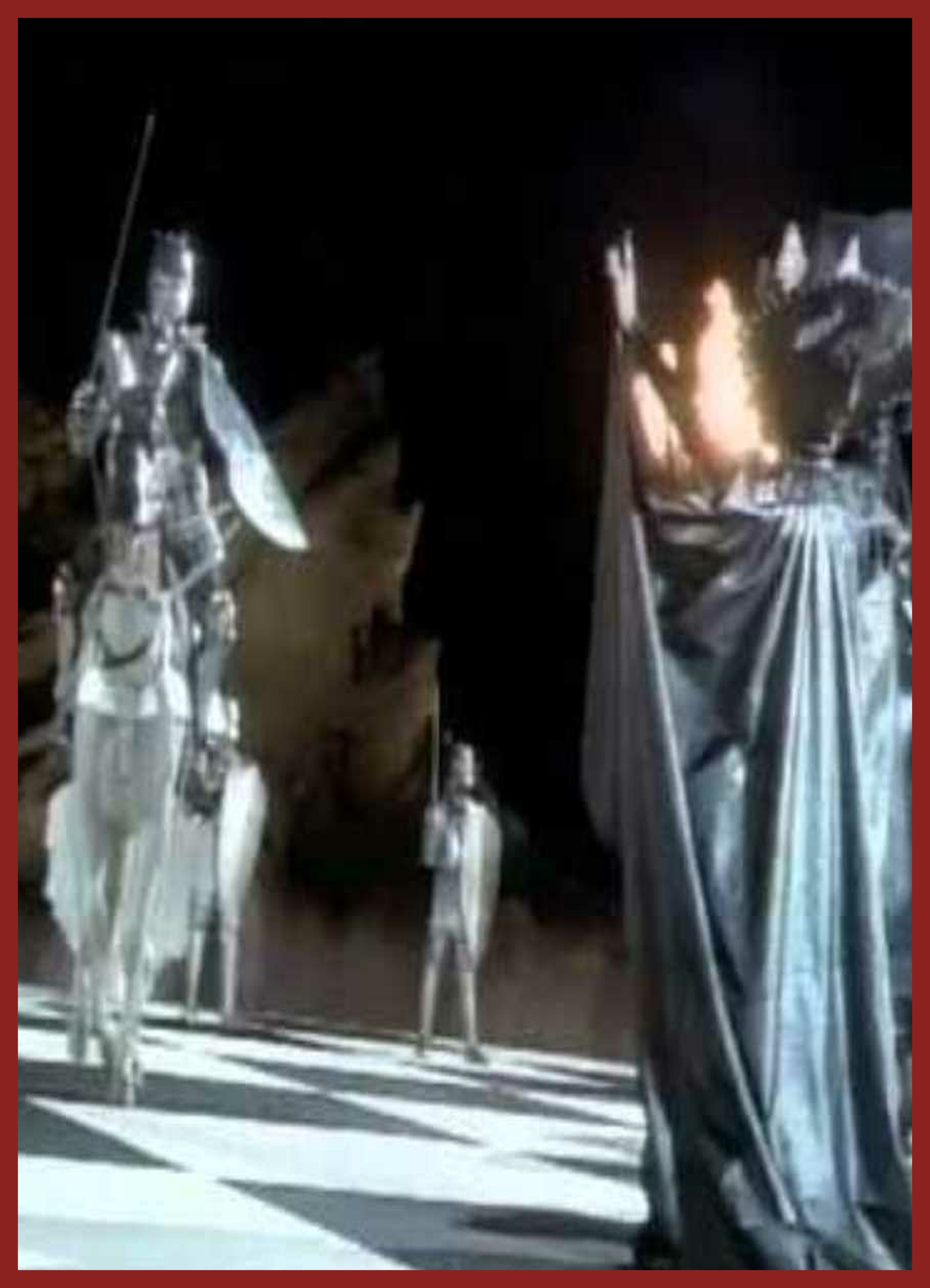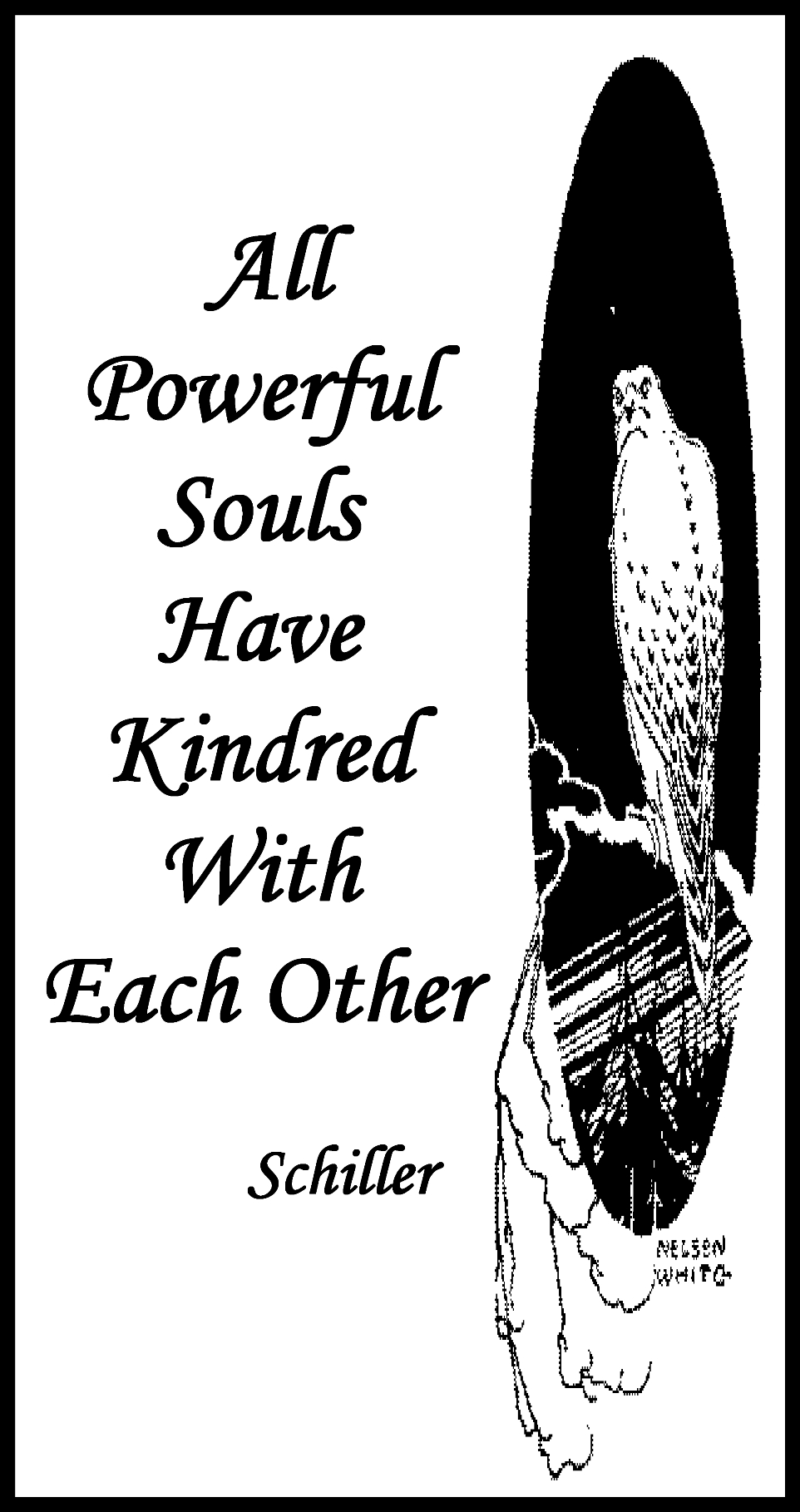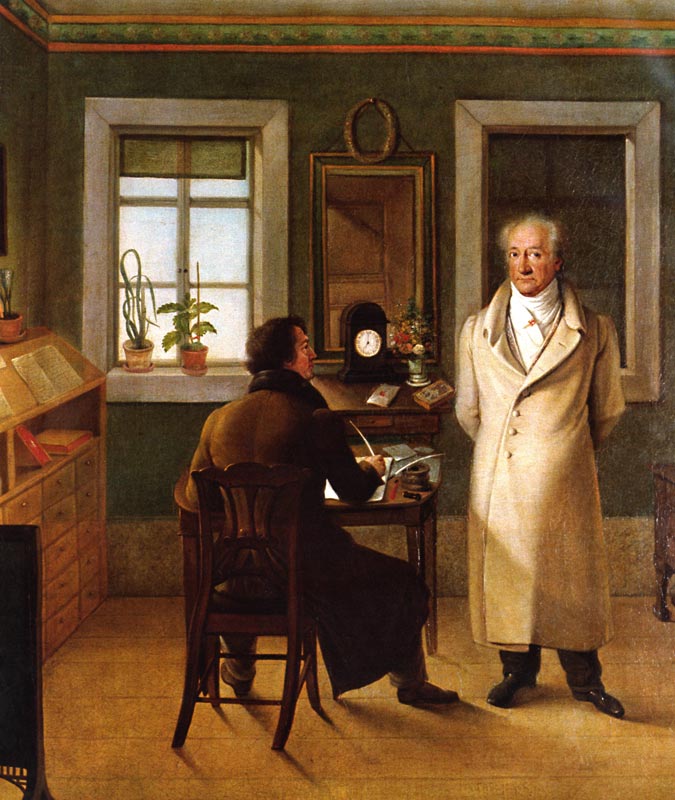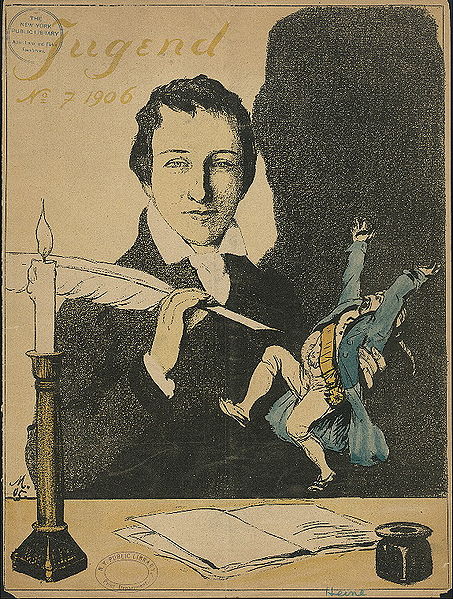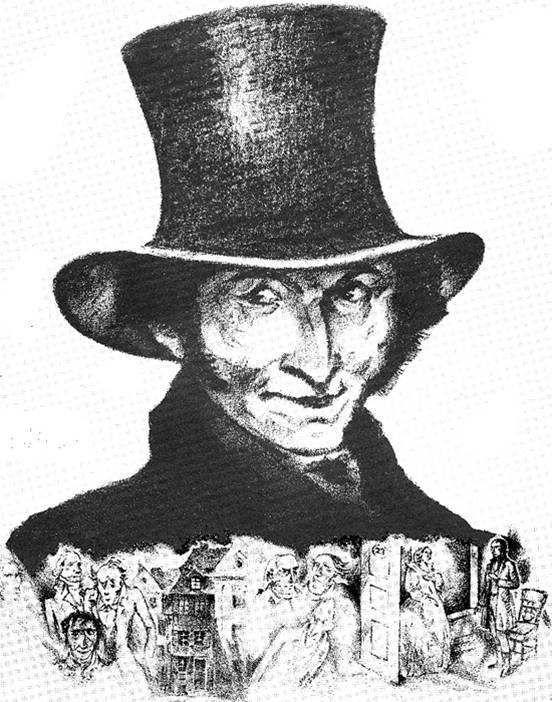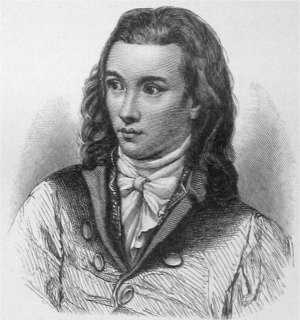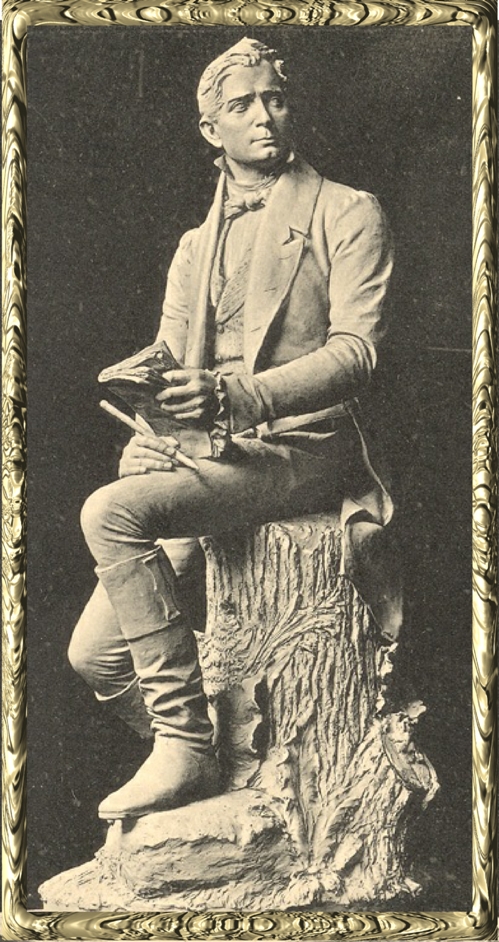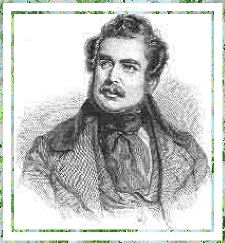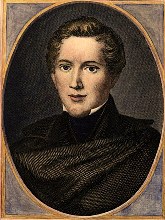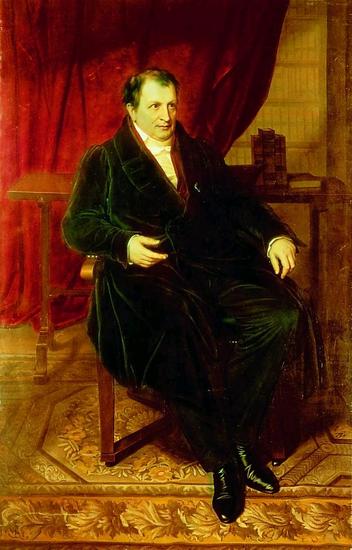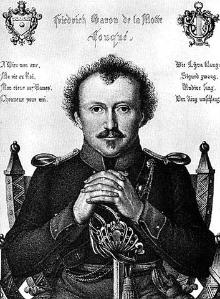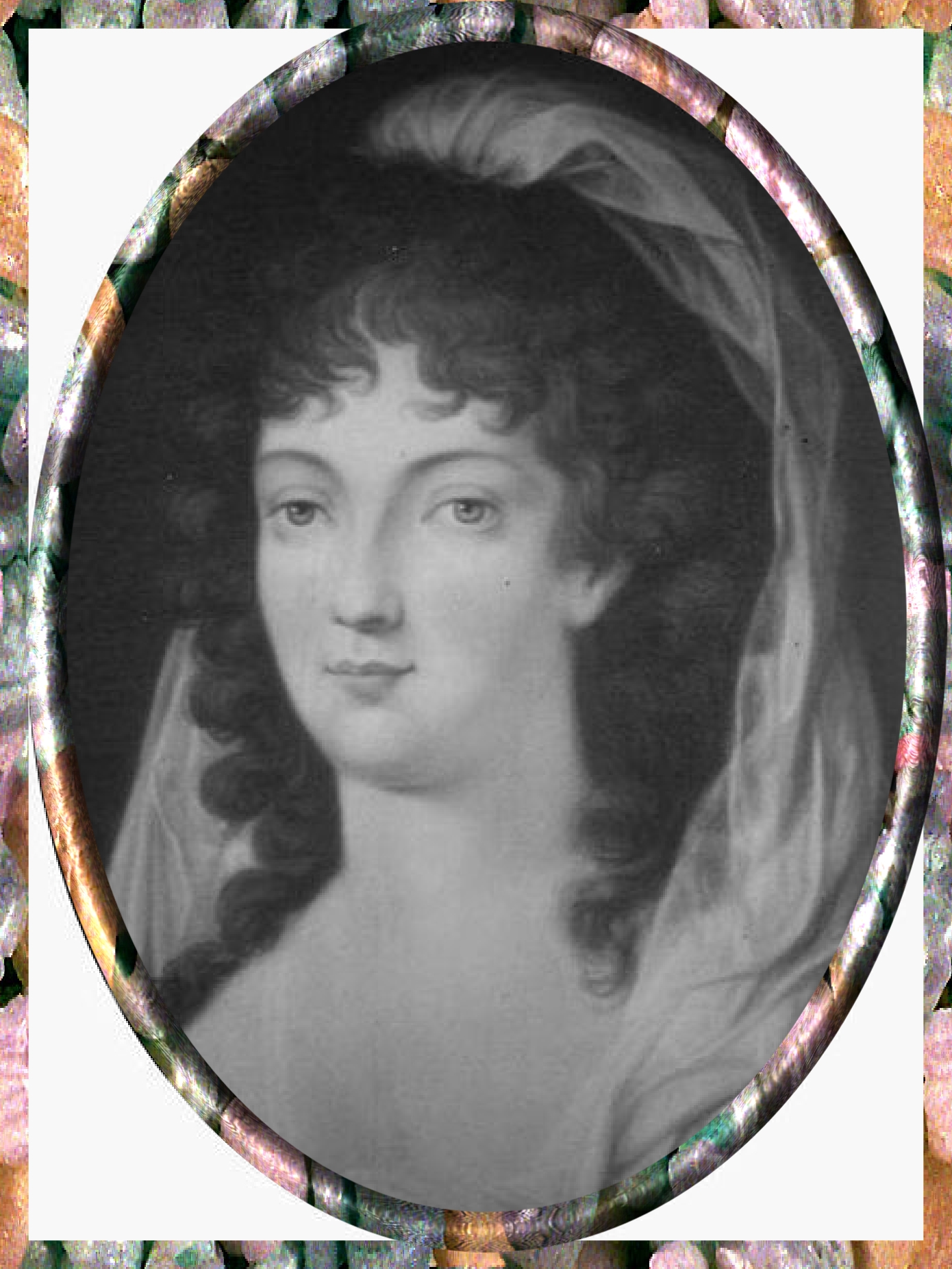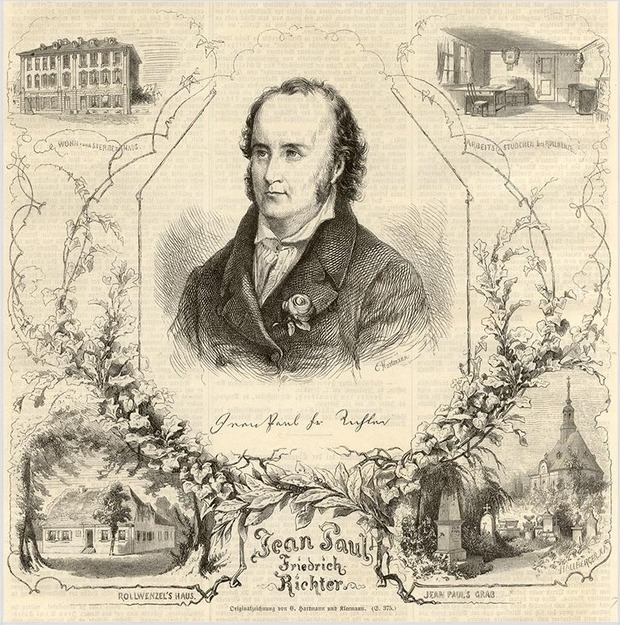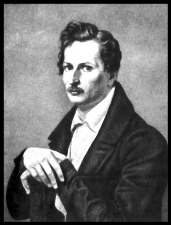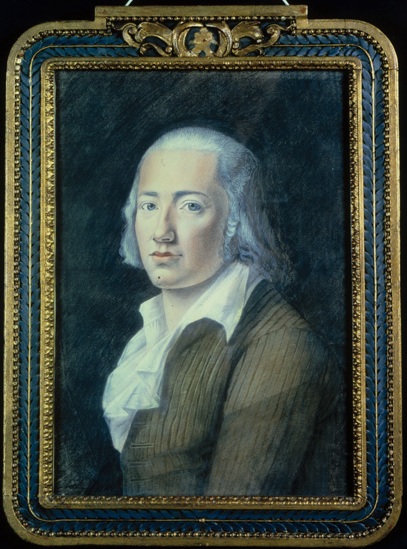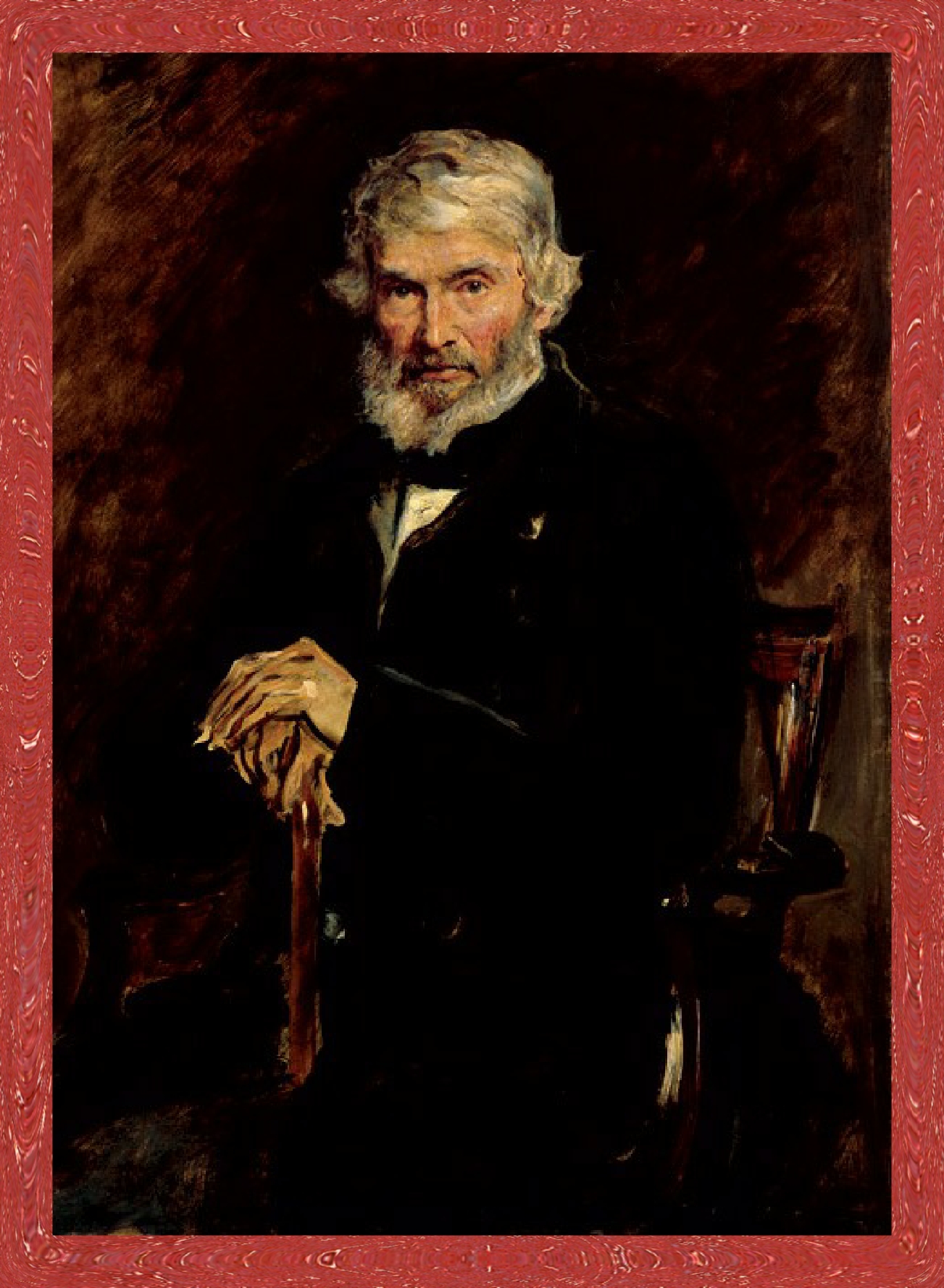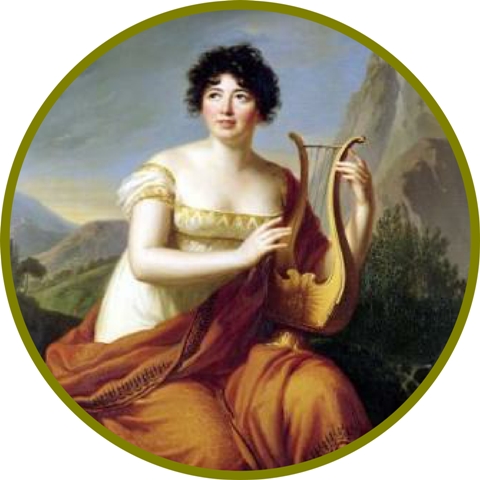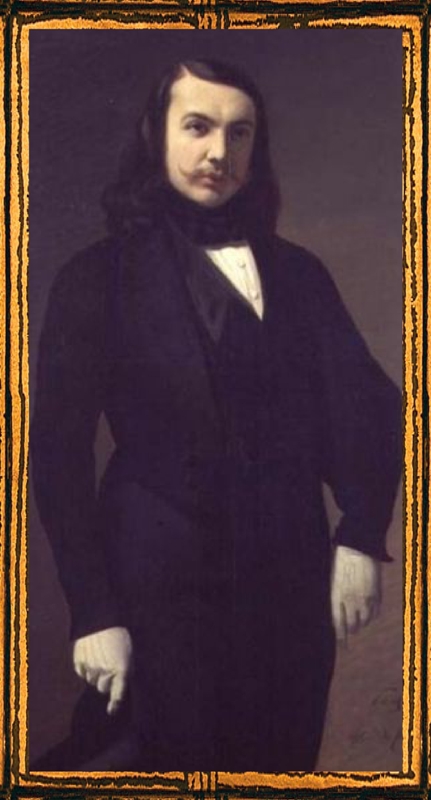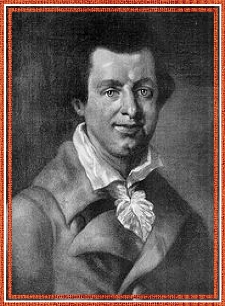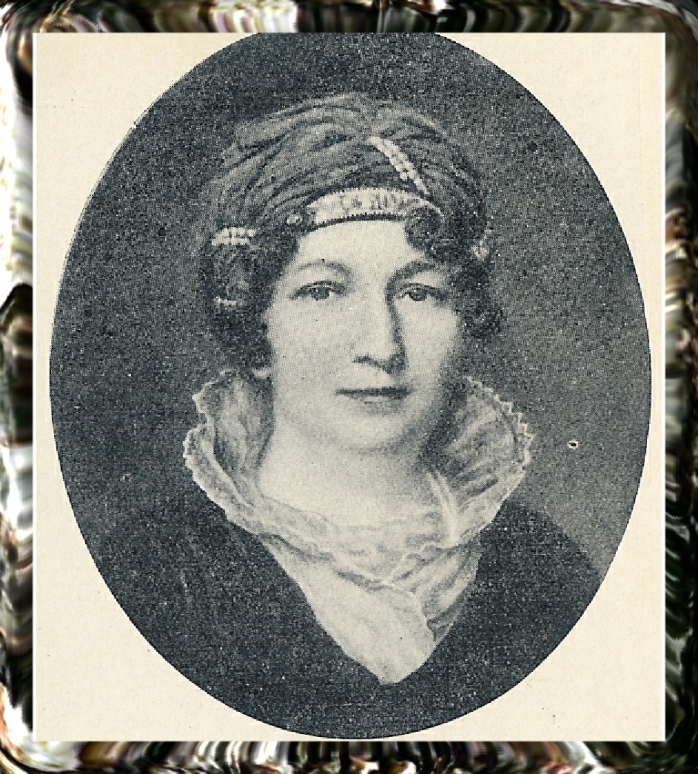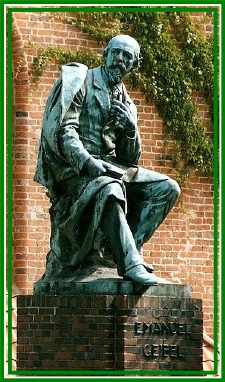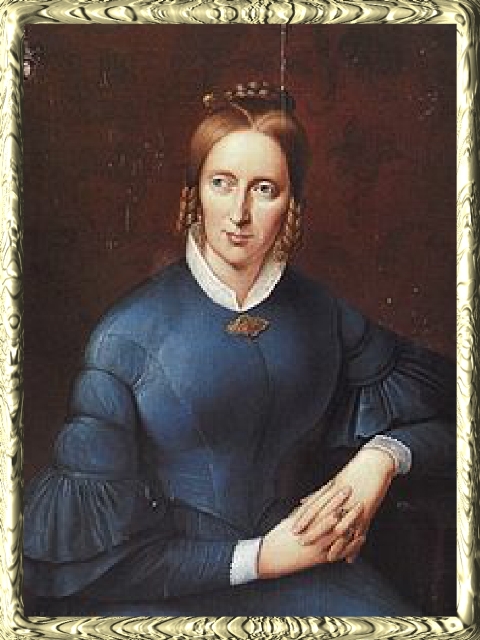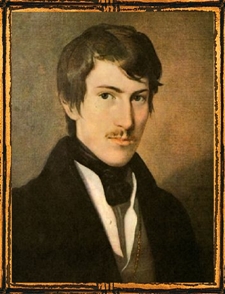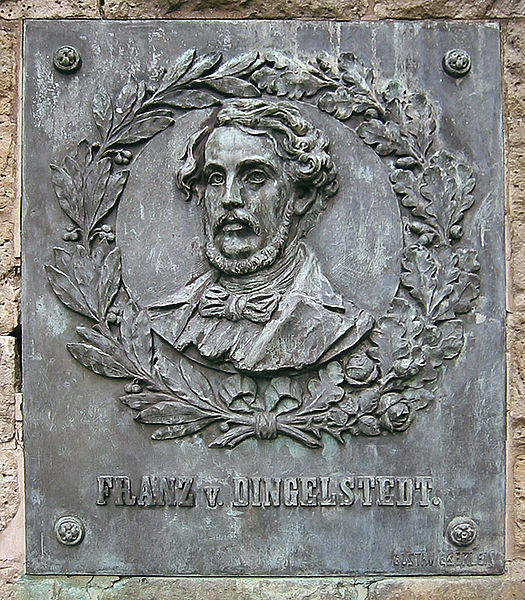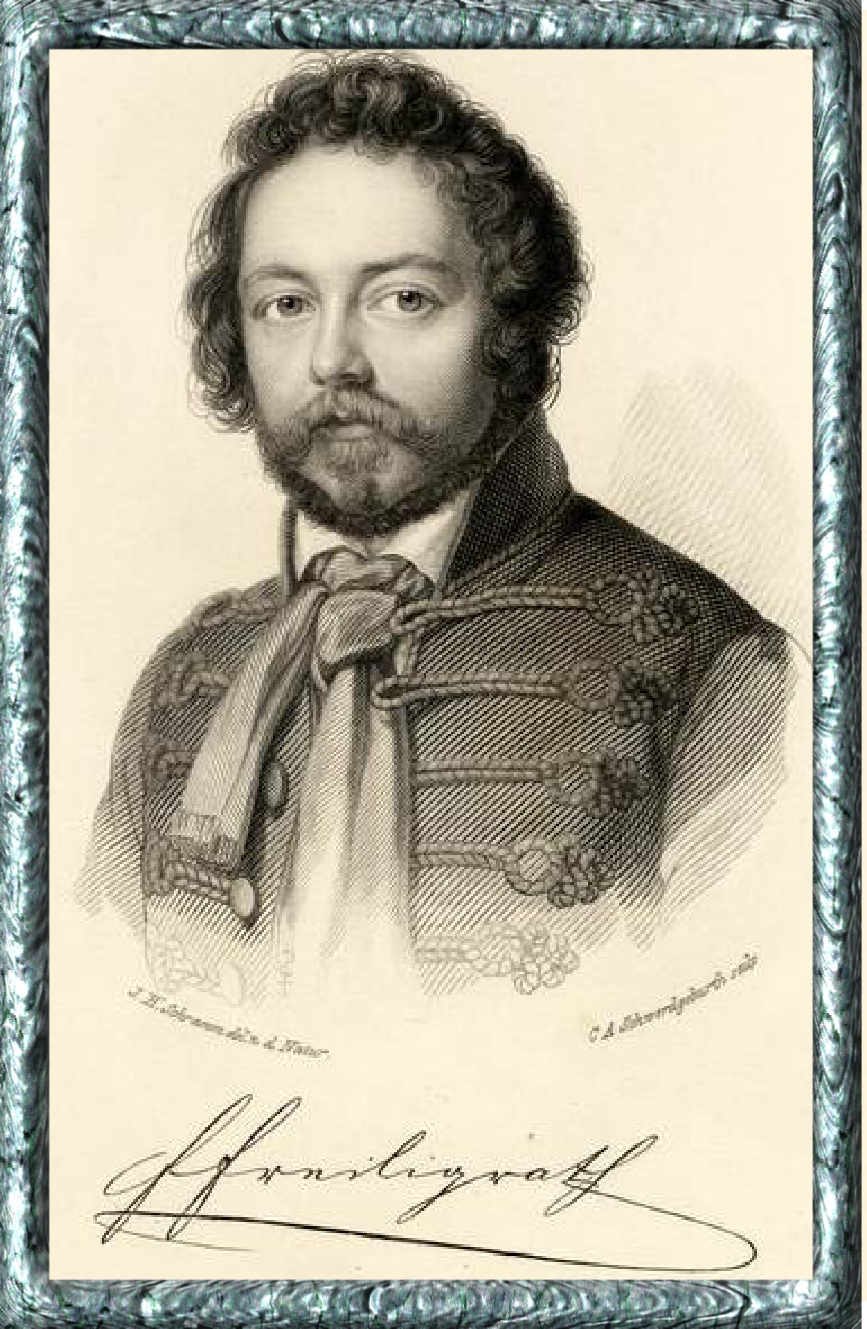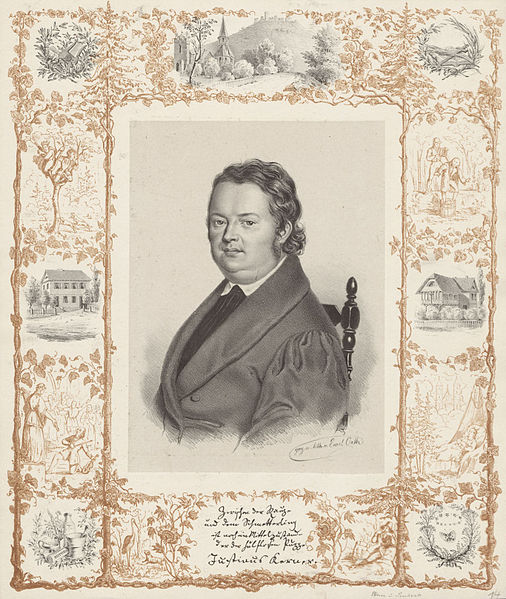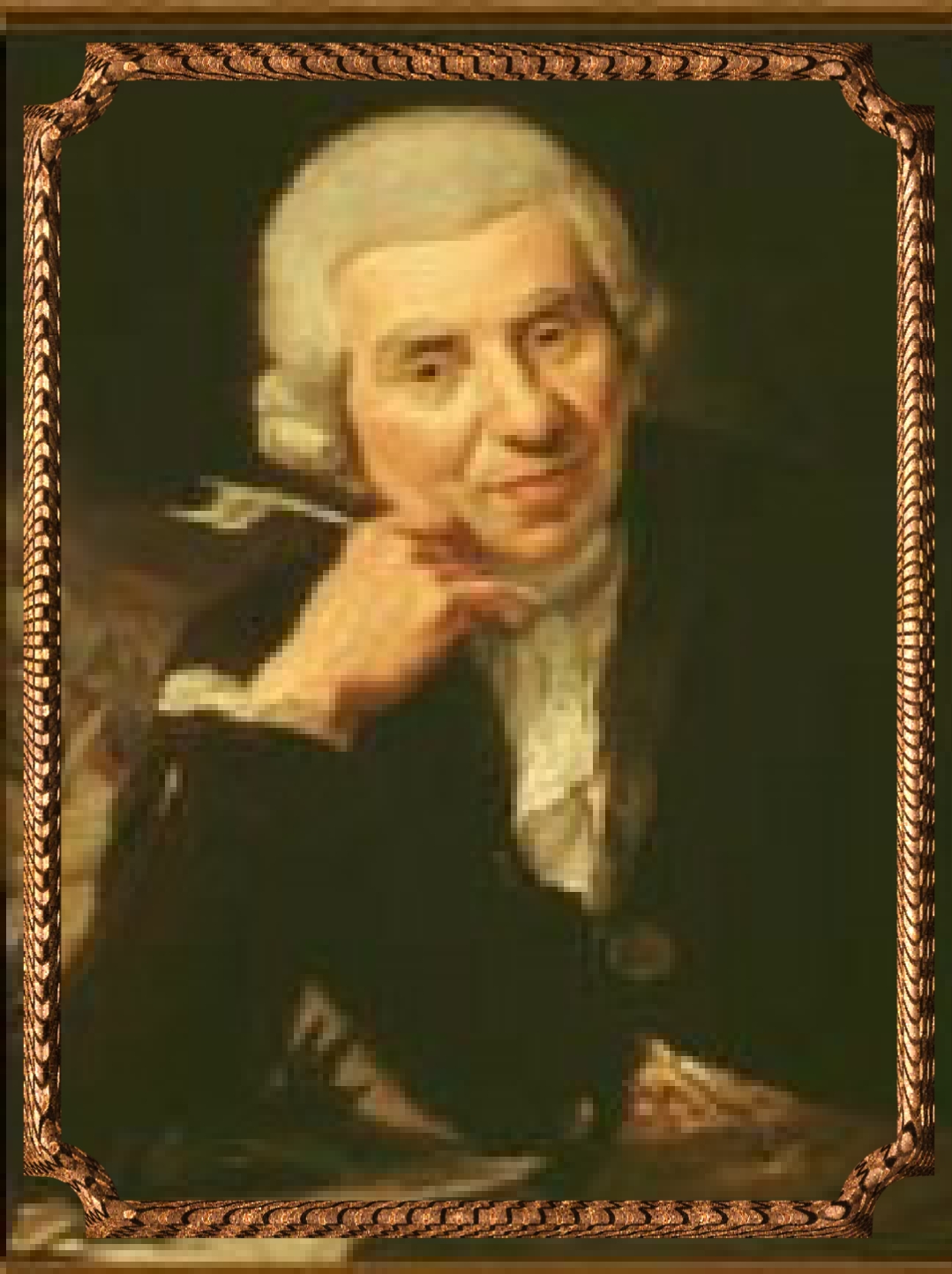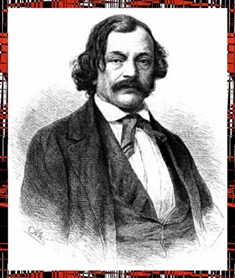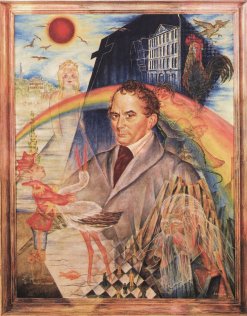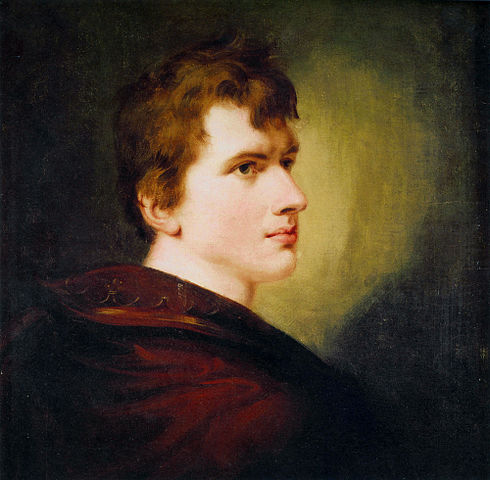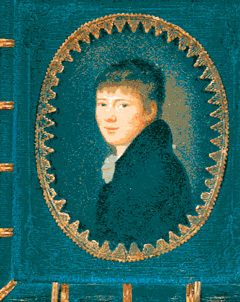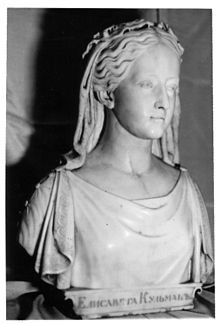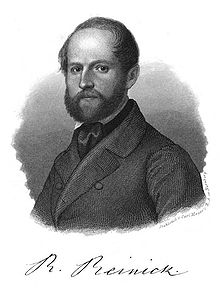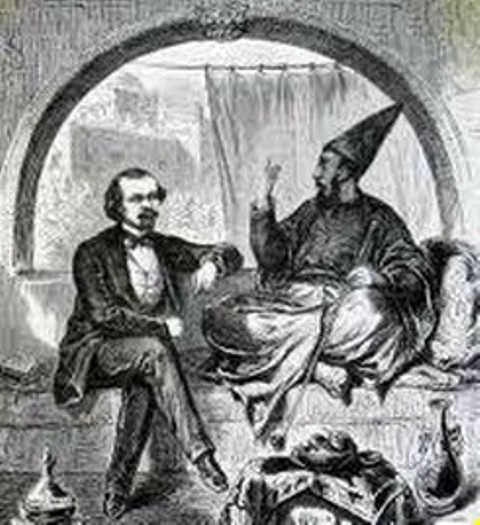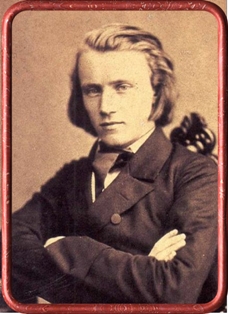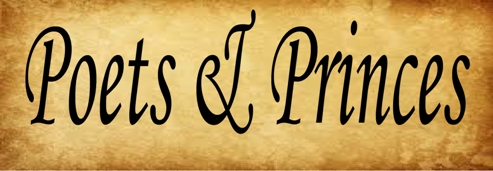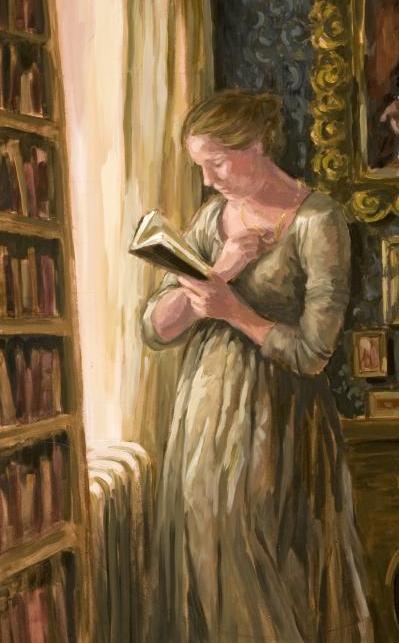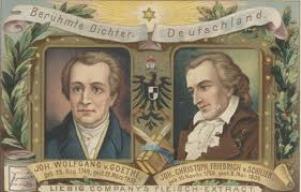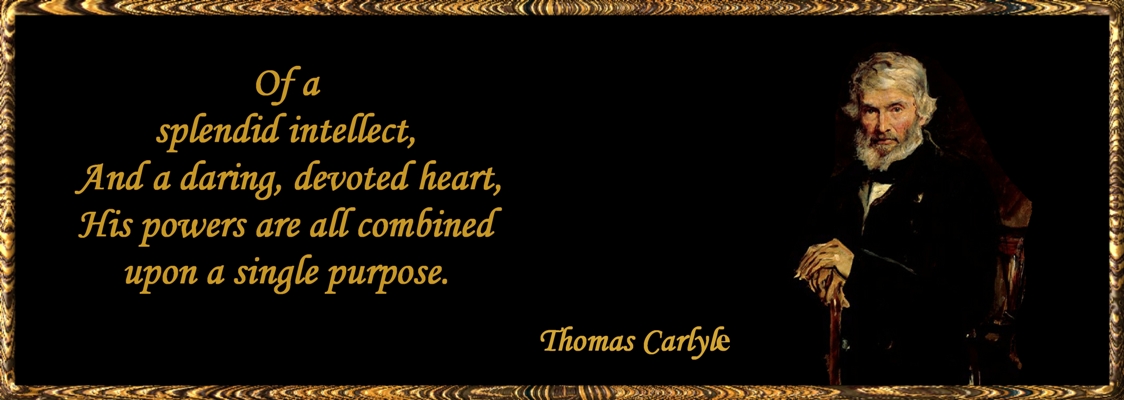Heinrich Heine: “The Romantic School…again” Part I of 9
Excerpt, “The Prose Writings of Heinrich Heine: Edited, with an Introduction, by Havelock Ellis.” Walter Scott, London: 23 Warwick Lane, Paternoster Row: 1887.
THE ROMANTIC SCHOOL
[The Romantic School, one of Heine’s chief works, of which the most interesting portions are here given, was published in 1833. It was first written in French, as a counterblast to Madame de Staël’s De l’Allemagne, forming a series of articles in the Europe Litteraire. Notwithstanding many errors of detail, and some occasional injustice, it remains by far the best account of the most important aspect of German literature. Indirectly Heine wished to lay down the programme of the future, for he regarded himself as the last of the Romantic poets, and the inaugurator of a new school. The following translation is Mr. Fleishman’s; it has been carefully revised.]
MADAME de Staël’s work, De l’Allemagne, is the only comprehensive account of the intellectual life of Germany which has been accessible to the French; and yet since her book appeared a considerable period has elapsed, and an entirely new school of literature has arisen in Germany. Is it only a transitional literature? Has it already reached its zenith? Has it already begun to decline? Opinions are divided concerning it.
The majority believe that with the death of Goethe a new literary era begins in Germany; that with him the old Germany also descended to its grave; that the aristocratic period of literature was ended, and the democratic just beginning; or, as a French journal recently phrased it, “The intellectual dominion of the individual has ceased,—the intellectual rule of the many has commenced.”
So far as I am concerned, I do not venture to pass so decided an opinion as to the future evolutions of German intellect. I had already prophesied many years in advance the end of the Goethean art-period, by which name I was the first to designate that era. I could safely venture the prophecy, for I knew very well the ways and the means of those malcontents who sought to overthrow the Goethean art-empire, and it is even claimed that I took part in those seditious outbreaks against Goethe. Now that Goethe is dead, the thought of it fills me with an overpowering sorrow.
While I announce this book as a sequel to Madame de Staël’s De l’Allemagne, and extol her work very highly as being replete with information, I must yet recommend a certain caution in the acceptance of the views enunciated in that book, which I am compelled to characterise as a coterie-book. Madame de Staël’s , of glorious memory, here opened, in the form of a book, a salon in which she received German authors and gave them an opportunity to make themselves known to the civilised world of France. But above the din of the most diverse voices, confusedly discoursing therein, the most audible is the delicate treble of Herr A. W. Schlegel.
Where the large-hearted woman is wholly herself,—where she is uninfluenced by others, and expresses the thoughts of her own radiant soul, displaying all her intellectual fireworks and brilliant follies,—there the book is good, even excellent. But as soon as she yields to foreign influences, as soon as she begins to glorify a school whose spirit is wholly unfamiliar and incomprehensible to her, as soon as through the commendation of this school she furthers certain Ultramontane tendencies which are in direct opposition to her own Protestant clearness, just so soon her book becomes wretched and unenjoyable.
To this unconscious partisanship she adds the evident purpose, through praise of the intellectual activity, the idealism, of Germany, to rebuke the realism then existing among the French, and the materialistic splendours of the Empire. Her book De l’Allemagne resembles in this respect the Germania of Tacitus, who perhaps likewise designed his eulogy of the Germans as an indirect satire against his countrymen. In referring to the school which Madame de Staël’s glorified, and whose tendencies she furthered, I mean the Romantic School. That this was in Germany something quite different from that which was designated by the same name in France, that its tendencies were totally diverse from those of the French Romanticists, will be made clear in the following pages.
But what was the Romantic School in Germany?
It was nothing else than the reawakening of the poetry of the middle ages as it manifested itself in the poems, paintings, and sculptures, in the art and life of those times. This poetry, however, had been developed out of Christianity; it was a passion-flower which had blossomed from the blood of Christ. I know not if the melancholy flower which in Germany we call the passion-flower is known by the same name in France, and if the popular tradition has ascribed to it the same mystical origin.
It is that motley-hued, melancholic flower in whose calyx one may behold a counterfeit presentment of the tools used at the crucifixion of Christ—namely, hammer, pincers, and nails. This flower is by no means unsightly, but only spectral: its aspect fills our souls with a dread pleasure, like those convulsive, sweet emotions that arise from grief. In this respect the passion-flower would be the fittest symbol of Christianity itself, whose most awe-inspiring charm consists in the voluptuousness of pain.
Although in France Christianity and Roman Catholicism are synonymous terms, yet I desire to emphasise the fact, that I here refer to the latter only. I refer to that religion whose earliest dogmas contained a condemnation of all flesh, and not only admitted the supremacy of the spirit over the flesh, but sought to mortify the latter in order thereby to glorify the former.
I refer to that religion through whose unnatural mission vice and hypocrisy came into the world, for through the odium which it cast on the flesh the most innocent gratification of the senses were accounted sins; and, as it was impossible to be entirely spiritual, the growth of hypocrisy was inevitable. I refer to that religion which, by teaching the renunciation of all earthly pleasures, and by inculcating abject humility and angelic patience, became the most efficacious support of despotism.
Men now recognise the nature of that religion, and will no longer be put off with promises of a Heaven hereafter; they know that the material world has also its good, and is not wholly given over to Satan, and now they vindicate the pleasures of the world, this beautiful garden of the gods, our inalienable heritage. Just because we now comprehend so fully all the consequences of that absolute spirituality, we are warranted in believing that the Christian-Catholic theories of the universe are at an end; for every epoch is a sphinx which plunges into the abyss as soon as its problem is solved.
We by no means deny the benefits which the Christian-Catholic theories effected in Europe. They were needed as a wholesome reaction against the terrible colossal materialism which was developed in the Roman Empire, and threatened the annihilation of all the intellectual grandeur of mankind. Just as the licentious memoirs of the last century form the pieces justificatives of the French Revolution; just as the reign of terror seems a necessary medicine when one is familiar with the confessions of the French nobility since the regency; so the wholesomeness of ascetic spirituality becomes manifest when we read Petronius or Apuleius, books
The flesh had become so insolent in this Roman world that Christian discipline was needed to chasten it. After the banquet of a Trimalkion, a hunger-cure, such as Christianity, was required.
Or did, perhaps, the hoary sensualists seek by scourgings to stimulate the cloyed flesh to renewed capacity for enjoyment? Did aging Rome submit to monkish flagellations in order to discover exquisite pleasure in torture itself, voluptuous bliss in pain?
Unfortunate excess! it robbed the Roman body-politic of its last energies. Rome was not destroyed by the division into two empires. On the Bosphorus as on the Tiber, Rome was eaten up by the same Judaic spiritualism, and in both Roman history became the record of a slow dying-away, a death agony that lasted for centuries. Did perhaps murdered Judea, by bequeathing its spiritualism to the Romans, seek to avenge itself on the victorious foe, as did the dying centaur, who so cunningly wheedled the son of Jupiter into wearing the deadly vestment poisoned with his own blood?
In truth, Rome, the Hercules among nations, was so effectually consumed by the Judaic poison that helm and armour fell from its decaying limbs, and its imperious battle tones degenerated into the prayers of snivelling priests and the trilling of eunuchs.
But that which enfeebles the aged strengthens the young. That spiritualism had a wholesome effect on the over-robust races of the north; the ruddy barbarians became spiritualised through Christianity; European civilisation began. This is a praiseworthy and sacred phase of Christianity. The Catholic Church earned in this regard the highest title to our respect and admiration. Through grand, genial institutions it controlled the bestiality of the barbarian hordes of the North, and tamed their brutal materialism.
The works of art in the middle ages give evidence of this mastery of matter by the spirit; and that is often their whole purpose. The epic poems of that time may be easily classified according to the degree in which they show that mastery. Of lyric and dramatic poems nothing is here to be said; for the latter do not exist, and the former are comparatively as much alike in all ages as are the songs of the nightingales in each succeeding spring.
Although the epic poetry of the middle ages was divided into sacred and secular, yet both classes were purely Christian in their nature; for if the sacred poetry related exclusively to the Jewish people and its history, which alone was considered sacred; if its themes were the heroes of the Old and the New Testaments, and their legends—in brief, the Church—still all the Christian views and aims of that period were mirrored in the secular poetry. The flower of the German sacred poetry of the middle ages is, perhaps, Barlaam and Josaphat, a poem in which the dogma of self-denial, of continence, of renunciation, of the scorn of all worldly pleasures, is most consistently expressed.
Next in order of merit I would rank Lobgesang auf den Heiligen Anno, but the latter poem already evinces a marked tendency towards secular themes. It differs in general from the former somewhat as a Byzantine image of a saint differs from an old German representation. Just as in these Byzantine pictures, so also do we find in Barlaam and Josaphat the greatest simplicity; there is no perspective, and the long, lean, statue-like forms, and the grave, ideal countenances, stand severely outlined, as though in bold relief against a background of pale gold.
In the Lobgesang auf den Heiligen Anno, as in the old German pictures, the accessories seem almost more prominent than the subject; and, notwithstanding the bold outlines, every detail is most minutely executed, and one knows not which to admire most, the giant-like conception or the dwarf-like patience of execution. Ottfried’s Evangeliengedicht, which is generally praised as the masterpiece of this sacred poetry, is far inferior to both of these poems.
In the secular poetry we find, as intimated above, first, the cycle of legends called the Nibelungenlied, and the Book of Heroes. In these poems all the ante-Christian modes of thought and feelings are dominant; brute force is not yet moderated into chivalry; the sturdy warriors of the North stand like statues of stone, and the soft light and moral atmosphere of Christianity have not yet penetrated their iron armour.
But dawn is gradually breaking over the old German forests, the ancient Druid oaks are being felled, and in the open arena Christianity and Paganism are battling: all this is portrayed in the cycle of traditions of Charlemagne; even the Crusades with their religious tendencies are mirrored therein. But now from this Christianised, spiritualised brute force is developed the peculiar feature of the middle ages, chivalry, which finally becomes exalted into a religious knighthood.
The earlier knighthood is most felicitously portrayed in the legends of King Arthur, which are full of the most charming gallantry, the most finished courtesy, and the most daring bravery. From the midst of the pleasing, though bizarre, arabesques, and the fantastic, flowery mazes of these tales, we are greeted by the gentle Gawain, the worthy Lancelot of the Lake, by the valiant, gallant, and honest, but somewhat tedious, Wigalois. By the side of this cycle of legends we find the kindred and connected legends of the Holy Grail, in which the religious knighthood is glorified, and in which are to be found the three grandest poems of the middle ages, Titurel, Parcival, and Lohengrin.
In these poems we stand face to face, as it were, with the muse of romantic poetry; we look deep into her large, sad eyes, and ere we are aware she has ensnared us in her network of scholasticism, and drawn us down into the weird depths of medieval mysticism. But further on in this period we find poems which do not unconditionally bow down to Christian spirituality; poems in which it is even attacked, and in which the poet, breaking loose from the fetters of an abstract Christian morality, complacently plunges into the delightful realm of glorious sensuousness.
Nor is it an inferior poet who has left us Tristan and Isolde, the masterpiece of this class. Verily, I must confess that Gottfried von Strasburg, the author of this, the most exquisite poem of the middle ages, is perhaps also the loftiest poet of that period. He surpasses even the grandeur of Wolfram von Eschilbach, whose Parcival, and fragments of Titurel, are so much admired. At present, it is perhaps permissible to praise Meister Gottfried without stint, but in his own time his book and similar poems, to which even Lancelot belonged, were considered Godless and dangerous. Francesca da Polenta and her handsome friend paid dearly for reading together such a book;—the greater danger, it is true, lay in the fact that they suddenly stopped reading.
All the poetry of the middle ages has a certain definite character, through which it differs from the poetry of the Greeks and Romans. In reference to this difference the former is called Romantic, the latter Classic. These names, however, are misleading, and have hitherto caused the most vexatious confusion, which is even increased when we call the antique poetry plastic as well as classic.
In this, particularly, lay the germ of misunderstandings; for artists ought always to treat their subject-matter plastically. Whether it be Christian or pagan, the subject ought to be portrayed in clear contours. In short, plastic configuration should be the main requisite in the modern romantic as well as in antique art. And, in fact, are not the figures in Dante’s Divine Comedy or in the paintings of Raphael just as plastic as those in Virgil or on the walls of Herculaneum?
The difference consists in this,—that the plastic figures in antique art are identical with the thing represented, with the idea which the artist seeks to communicate. Thus, for example, the wanderings of the Odyssey mean nothing else than the wanderings of the man who was a son of Laertes and the husband of Penelope, and was called Ulysses. Thus, again, the Bacchus which is to be seen in the Louvre is nothing more than the charming son of Semele, with a daring melancholy look in his eyes, and an inspired voluptuousness on the soft arched lips. It is otherwise in romantic art: here the wanderings of a knight have an esoteric signification; they typify, perhaps, the mazes of life in general.
The dragon that is vanquished is sin; the almond-tree, that from afar so encouragingly wafts its fragrance to the hero, is the Trinity, the God-Father, God-Son, and God-Holy-Ghost, who together constitute one, just as shell, fibre, and kernel together constitute the almond. When Homer describes the armour of a hero, it is naught else than a good armour, which is worth so many oxen; but when a monk of the middle ages describes in his poem the garments of the Mother of God, you may depend upon it, that by each fold of those garments he typifies some special virtue, and that a peculiar meaning lies hidden in the sacred robes of the immaculate Virgin Mary; as her Son is the kernel of the almond, she is quite appropriately described in the poem as an almond-blossom. Such is the character of that poesy of the middle ages which we designate romantic.
Classic art had to portray only the finite, and its forms could be identical with the artist’s idea. Romantic art had to represent, or rather to typify, the infinite and the spiritual, and therefore was compelled to have recourse to a system of traditional, or rather parabolic, symbols, just as Christ himself had endeavoured to explain and make clear his spiritual meaning through beautiful parables. Hence the mystic, enigmatical, miraculous, and transcendental character of the art-productions of the middle ages. Fancy strives frantically to portray through concrete images that which is purely spiritual, and in the vain endeavour invents the most colossal absurdities; it piles Ossa on Pelion, Parcival on Titurel, to reach heaven.
Similar monstrous abortions of imagination have been produced by the Scandinavians, the Hindoos, and the other races which likewise strive through poetry to represent the infinite; among them also do we find poems which may be regarded as romantic.
Concerning the music of the middle ages little can be said. All records are wanting. It was not until late in the sixteenth century that the masterpieces of Catholic Church music came into existence, and, of their kind, they cannot be too highly prized, for they are the purest expression of Christian spirituality. The recitative arts, being spiritual in their nature, quite appropriately flourished in Christendom. But this religion was less propitious for the plastic arts, for as the latter were to represent the victory of spirit over matter, and were nevertheless compelled to use matter as a means to carry out this representation, they had to accomplish an unnatural task.
Hence sculpture and painting abounded with such revolting subjects as martyrdoms, crucifixions, dying saints, and physical sufferings in general. The treatment of such subjects must have been torture for the artists themselves; and when I look at those distorted images, with pious heads awry, long, thin arms, meagre legs, and graceless drapery, which are intended to represent Christian abstinence and ethereality, I am filled with an unspeakable compassion for the artists of that period. It is true the painters were somewhat more favoured, for colour, the material of their representation, in its intangibility, in its varied lights and shades, was not so completely at variance with spirituality as the material of the sculptors;
But even they, the painters, were compelled to disfigure the patient canvas with the most revolting representations of physical suffering. In truth, when we view certain picture galleries, and behold nothing but scenes of blood, scourgings, and executions, we are fain to believe that the old masters painted these pictures for the gallery of an executioner.
To be continued…
Link to Part Four
